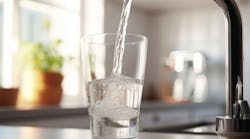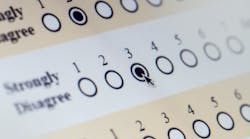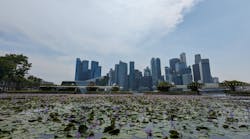Researchers at São Paulo State University (UNESP) in Brazil have developed a strategy for removing glyphosate, one of the world’s most frequently used herbicides, from water, according to a press release from the São Paulo Research Foundation.
Inspired by the concept of the circular economy, the technique is based on sugarcane bagasse, a waste material produced by sugar and ethanol plants.
The findings are published in the journal Pure and Applied Chemistry.
Owing to its low cost and high potential to raise crop yields, glyphosate is widely used to control the growth of unwanted plants, such as weeds, invasive species and agricultural pests, but scientific studies have shown that it can be a human health hazard and in particular may pose a cancer risk.
Application of glyphosate-containing products is restricted or banned in Austria, Bulgaria, Colombia, Costa Rica, Denmark, El Salvador, Germany and Greece, among other countries.
In Brazil, however, annual use of such products averages 173,150.75 metric tons. Part of that use is borne away by rain into rivers, wells and other aquatic environments.
Scientists at UNESP’s School of Sciences and Technology (FCT) in Presidente Prudente found a way to remove glyphosate products from water in research led by postdoctoral fellow Guilherme Dognani and Aldo Eloizo Job, a professor at FCT-UNESP.
How it works
“The bagasse is shredded and the cellulose isolated by separating it from the hemicellulose and lignin,” said Dognani. “The cellulose fibers are then functionalized by adding quaternary ammonia groups to their surface so that the material is positively charged. The resulting cationic cellulose microfibers bind easily to glyphosate.”.
Leal added that there are certain favorable conditions, such as pH variation, which was the focus of the study.
“When pH is varied, both the adsorbent material and the glyphosate display different molecular configurations,” Leal said. “The most efficient level for interaction between them, inducing the most adsorption and hence optimal removal, is pH 14.”
To evaluate adsorption capacity, the researchers prepared fractions of a glyphosate solution with pH 2, 6, 10 and 14, measured using a pH meter. They then added to each fraction identical amounts of functionalized cellulose microfiber. The flasks with the solution contaminated by glyphosate plus cellulose were agitated for 24 hours. In accordance with the procedure described in the literature, they were then heated in a water bath until the reaction occurred, cooled to room temperature and analyzed by visible light spectrophotometry. Removal efficiency was calculated as a ratio of initial to final glyphosate levels in each sample, and adsorption capacity was calculated as a function of pH.



